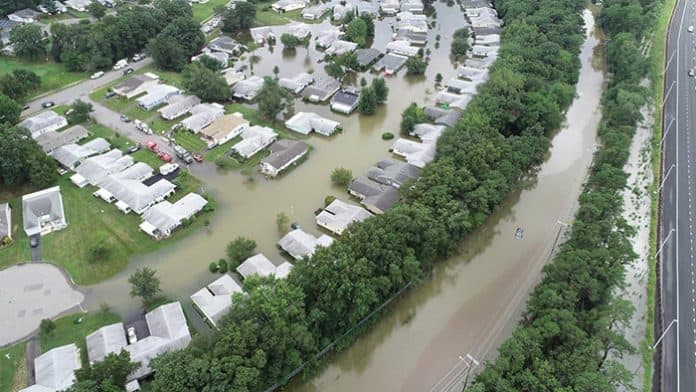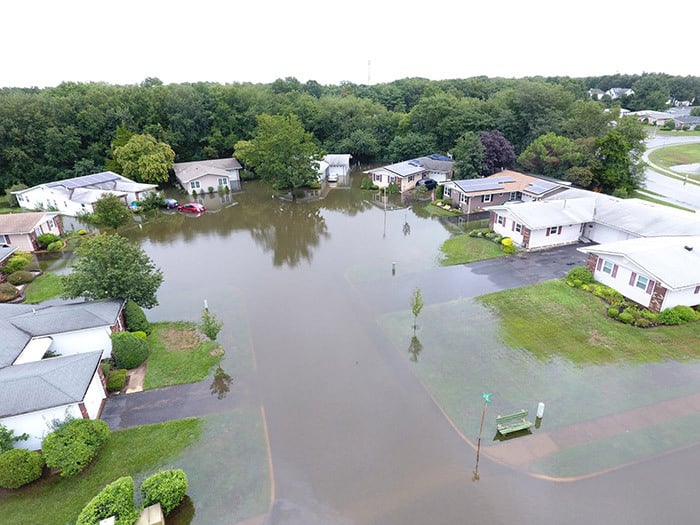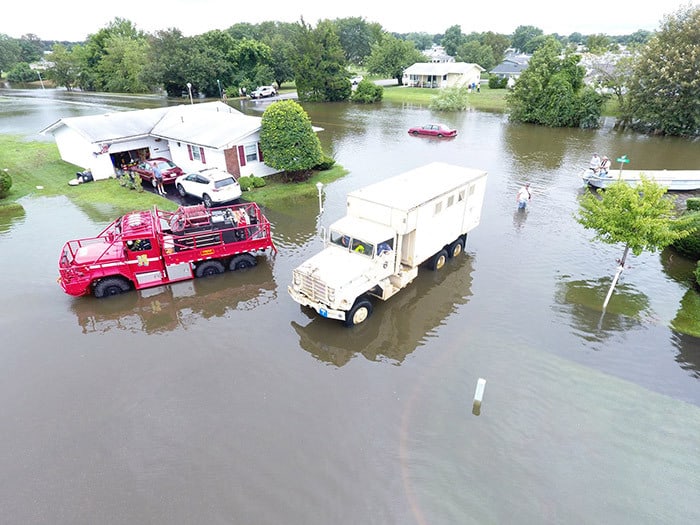
BRICK – The township has finally received an engineering report from the county regarding the Aug. 13, 2018 flooding event that resulted in water damage to hundreds of homes located near the Garden State Parkway (GSP) Interchange 91, where major roadway renovations had recently been completed.
Many residents in the area blamed the GSP renovations for flooding their neighborhoods, which included 106 homes in the age-restricted Greenbriar development. Some 8.5 inches of rain fell within two and a half hours, which is the normal rainfall for a two-month period.
An Aug. 15 preliminary report by County Engineer John Ernst said that the reconfiguration of the Parkway Exit 91 was not the cause of flooding in the north section of Brick, that the design of the project “was adequate, but we had a storm beyond what any design standard was designed for.”

Shortly afterward, the Brick Township Council passed a resolution calling for the county to conduct an independent engineering study, since most of the affected areas were not in the floodplain and had never flooded before.
“We have been waiting since that time for this report, and we were recently provided with that, so I will give you a brief overview of what it says,” said Township Business Administrator Joanne Bergin during the Dec. 3 council meeting.
The county retained French and Parrello Associates Engineering firm to provide the analysis and review of available construction documents that the county provided as it relates to the interchange, she said.
They did some site reconnaissance and paid special attention to the Greenbriar development drainage system as well as all culvert crossings of the GSP and Burrsville Road, Bergin said.
The engineers did a topographic survey of those culverts, and field observations and hydraulic analysis of the drainage area, which resulted in several conclusions, she said.
First, the GSP roadway surface is approximately five feet higher than the westerly section of the Greenbriar development, and any backup of the GSP culverts due to severe rainfall would result in flooding of the westerly section of Greenbriar, pre- or post-improvements to Interchange 91.
“That is unavoidable based on the height of the roadway,” Bergin said.
Based on their hydraulic analysis, in flood events of a 10-year frequency or greater, a portion of the runoff to the GSP north culvert will overflow the banks of the upstream channel flow to the GSP south culvert, the report says. (A 10-year storm is just a storm that is so severe that something like it only comes along once a decade.)
“So, what they’re saying here is that it’s a historic rain event, and the rain basically had nowhere to go,” she said.

The overflow was estimated to be 352 cubic feet per second, which almost doubles the flow to the GSP south culvert without any overflow.
The GSP south culvert is a smaller pipe with less capacity than the GSP north culvert, the report adds.
The engineers concluded that improvements to the GSP interchange 91 had “minimal impact on the degree of flooding at the Greenbriar development,” and that the nearby county improvements to Burrsville Road “had no impact” on the flooding event.
And finally, a comparison of pre-storm aerial photos from April 14, 2018 and post-storm aerial photos taken on March 11, 2019 show that the southerly/easterly bank of the upstream channel at the GSP north culvert has been armored with riprap stone, and the upstream face of the GSP south culvert has been stabilized using gabion baskets, which appear to have been completed after the August storm event.
According to the report, based on the extended duration of flooding conditions, there appears to have been some blockage of the flow at the culverts.






